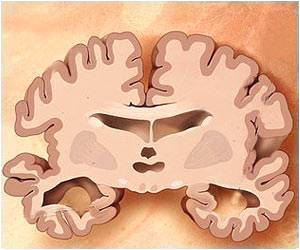Deep brain stimulation of the regions of the brain that are involved in memory results in 5 to 20% of memory impairment.
Highlights
- Deep brain stimulation involves implanting electrodes deep inside the brain and passing electric currents.
- Previous research had stated that deep brain stimulation (DBS) caused a 64% improvement in memory.
- However, recent research has proved that DBS caused memory impairment by at least 5% to 20%.
The study opposes an earlier research conducted in 2012, that was published in The New England Journal of Medicine. The research had stated that there was a 64% improvement in memory of patients subjected to deep brain stimulation (DBS).
The current study states that none of the participants showed any improvement. On the other hand their memory was impaired by at least 5% to 20% with stimulation.
But researchers still believe DBS would be a possible intervention for individuals with memory problems caused by disease or trauma.
The findings suggest that if this specific form of stimulation diminishes memory performance, there may be other approaches that may improve it.
Deep Brain Stimulation
Deep brain stimulation is an invasive, neurosurgical procedure. It involves implanting electrodes deep inside the brain and passing electric currents through it to stimulate the surrounding neurons.It has beneficial effects for conditions like Alzheimer’s disease, Parkinson’s disease, different forms of dementia, major depression and obsessive-compulsive disorder.
Previous Study
The study titled “Memory Enhancement and Deep-Brain Stimulation of the Entorhinal Area” was conducted by Nanthia Suthana and colleagues in 2012.
Researchers had recruited seven patients suffering from epilepsy who had electrodes implanted in their brain for mapping seizures. Epilepsy may affect the memory function.
Subjects completed a spatial learning task. Spatial navigation depends on spatial memory. Median temporal lobe plays an important role when it comes to spatial memory.
While the left medial temporal lobe controls verbal learning, the right medial temporal lobe is responsible for nonverbal learning.
The findings from the study showed that spatial learning in humans could be improved by electrical stimulation of the entorhinal region, a specific site within the medial temporal lobe and the chief gateway into the hippocampus.
The stimulation of the entorhinal region while subjects were learning, improved memory performance.
Recent Study
Though the findings from the previous research were encouraging, the evidence suggested that the kind of stimulation used would actually inhibit neurons and potentially impair memory.
"We had conflicting thoughts," says Jacobs. "So we thought it would be important to replicate this kind of finding."
Similar to the previous study, researchers recruited epilepsy patients. But the number of participants were 49.
A spatial memory task that involved remembering the location of an object in a 3D virtual space was conducted and participants had to navigate through the space to find an object.
During control sessions, they received no stimulation. In stimulation sessions, they would experience 50 pulses of electrical current per second for 5 seconds.
"Stimulation occurs only during the time that people are encoding the memory," says Jacobs. "The task was well controlled."
A verbal memory task that involved recalling words on a list was also conducted. Electrical pulses were delivered while participants studied the list, for 4.6 seconds.
Results of the Current Study
None of the participants showed statistically significant improvement in memory after stimulation.
Stimulation of the entorhinal cortex resulted in a reduced accuracy in memories of 9% compared to non-stimulated memories.
Stimulation of the hippocampus resulted in 8% impairment of memory.
Impairment across all regions that were stimulated ranged from 5% to 20% for both tasks.
Minor differences in the two studies
- Number of participants - 7 in the previous study and 49 in the current study
- Number of memory retrieval tasks per session- 6 in the previous study and 48 in the current study.
- Difference in measurement of spatial memory - to measure the spatial memory, in the previous study, participants revisited the 3D virtual space while the objects remained visible in the space during the recall test. This may have skewed the results in the positive direction.
Researchers then calculated the difference in the remembered locations from actual locations.
"It's quite a bit bigger and more statistically powered, so it's more likely to produce accurate results," says Jacobs.
"Theirs was a first study of its kind," says Jacobs. "It's important to improve the protocol in a way that quantifies spatial memory more precisely."
Conclusion
Though improving memory is not possible through deep brain stimulation, it maybe possible to alter a neural process that is as complex as memory, using electrical stimulation.
"The simple approach to stimulation doesn't work very well, so we're trying to develop a more advanced approach," he says.
Researchers are now working to devise more complex DBS interventions that respond to brain activity in real time and boost memory in the positive direction.
The study titled "Direct electrical stimulation of the human entorhinal region and hippocampus impairs memory" was conducted Joshua Jacobs and colleagues.
References:
- Benefits of Deep Brain Stimulation for Alzheimer’s - (http://www.alzheimers.net/8-3-15-benefits-of-deep-brain-stimulation-for-alzheimers/)
- Nanthia Suthana. Memory Enhancement and Deep-Brain Stimulation of the Entorhinal Area. The New England Journal of Medicine; (2016) DOI:10.1056/NEJMoa1107212
Source-Medindia
















